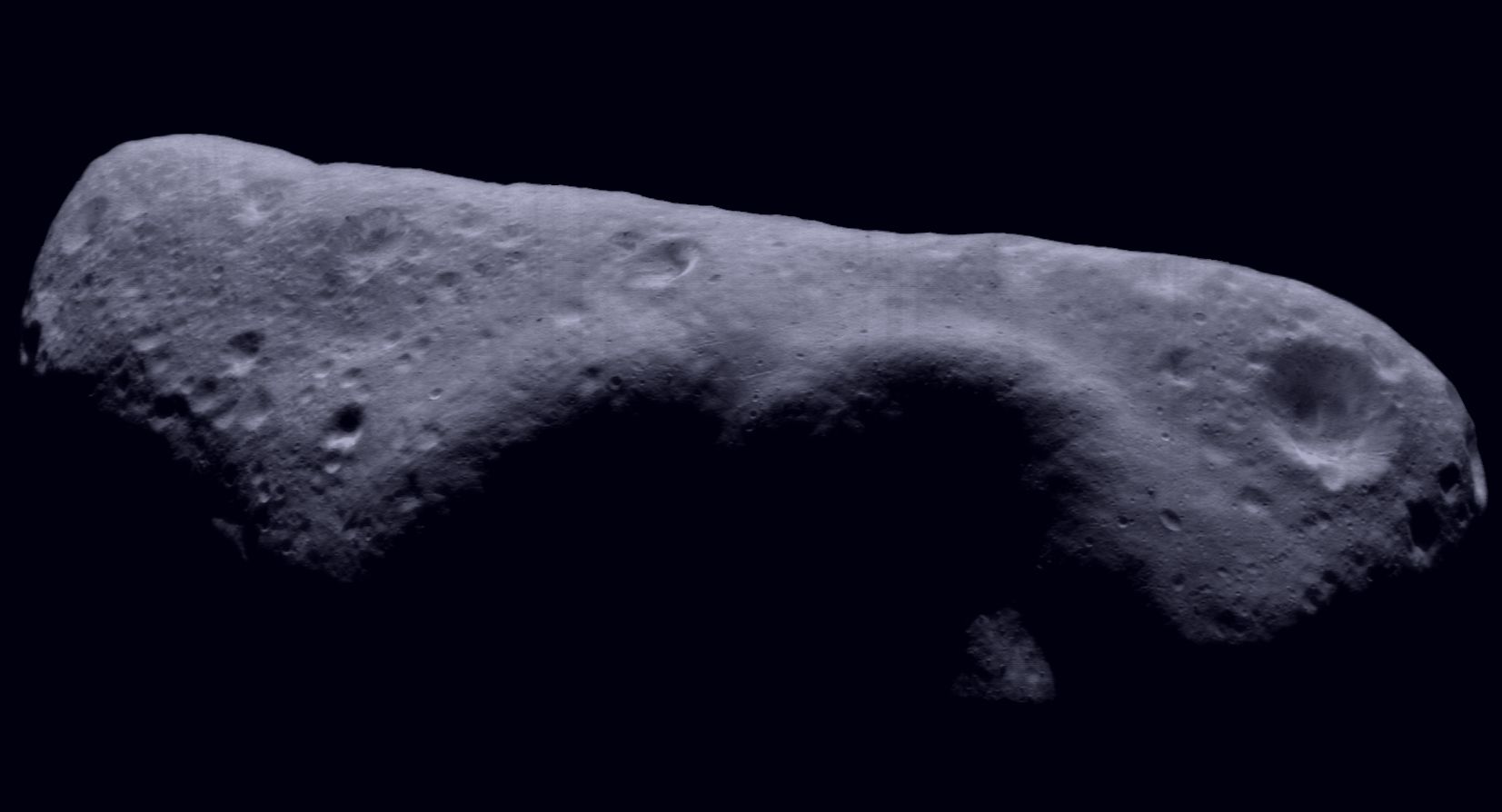| Solar System Dynamics Group |
 |
(29075) 1950 DA older results |
 |
| Solar System Dynamics Group |
 |
(29075) 1950 DA older results |
 |
Asteroid (29075) 1950 DA was discovered on February 23, 1950 by Carl A. Wirtanen at Lick Observatory. It was observed for 17 days and then lost for half a century. An object discovered on December 31, 2000 and provisionally designated as 2000 YK66 was next recognized as 1950 DA. Asteroid 1950 DA made a close approach to the Earth in 2001 coming to within 7.8 million km. Radar image taken at the Goldstone and Arecibo observatories from March 3 to 7, 2001 (0.052 au; 22 lunar distances) showed that the asteroid has a mean diameter of 1.1—1.4 km. It will approach near to the Earth on March 16, 2880 .
Orbital elements of impact orbit for two dates (equ. J2000)
| Epoch [TT] | a [AU] | e | i [deg] | Ω [deg] | ω [deg] | M [deg] | rms | |
|---|---|---|---|---|---|---|---|---|
| dev/σ |
20120930 28800309 |
1.698215453 3.22 1.702704384 |
0.508285316 0.69 0.513497769 |
12.1747914 8.67 11.1320609 |
356.7280709 2.00 344.9713132 |
224.6135012 0.51 239.0664832 |
64.1562045 -7.24 337.9995056 |
0″.39 |
Impact date: 2880 03 16.989 (UT) Vimpact= 17.827 km/sec Ψimpact = 4°.61
Orbital elements of impact orbit for two dates (equ. J2000)
| Epoch [TT] | a [AU] | e | i [deg] | Ω [deg] | ω [deg] | M [deg] | rms | |
|---|---|---|---|---|---|---|---|---|
| dev/σ |
20101016 28800309 |
1.699330253 3.36 1.702704323 |
0.507510745 -0.67 0.513497883 |
12.1810171 0.51 11.1321324 |
356.7756685 0.80 344.9711970 |
224.5435708 -0.75 239.0665751 |
105.9118256 -2.69 337.9996425 |
0″.51 |
Impact date: 2880 03 16.988 (UT) Vimpact= 17.853 km/sec Ψimpact = 2°.01
Orbital elements of impact orbit for two dates (equ. J2000)
| Epoch [TT] | a [AU] | e | i [deg] | Ω [deg] | ω [deg] | M [deg] | rms | |
|---|---|---|---|---|---|---|---|---|
| dev/σ |
20081130 28800309 |
1.698749666 -0.40 1.702704337 |
0.507531546 0.42 0.513497830 |
12.1820086 -0.55 11.1321243 |
356.7825108 0.60 344.9712751 |
224.5336250 -0.10 239.0664927 |
161.0594362 -1.53 337.9996122 |
0″.73 |
Impact date: 2880 03 16.989 (UT) Vimpact= 17.848 km/sec Ψimpact = 1°.92